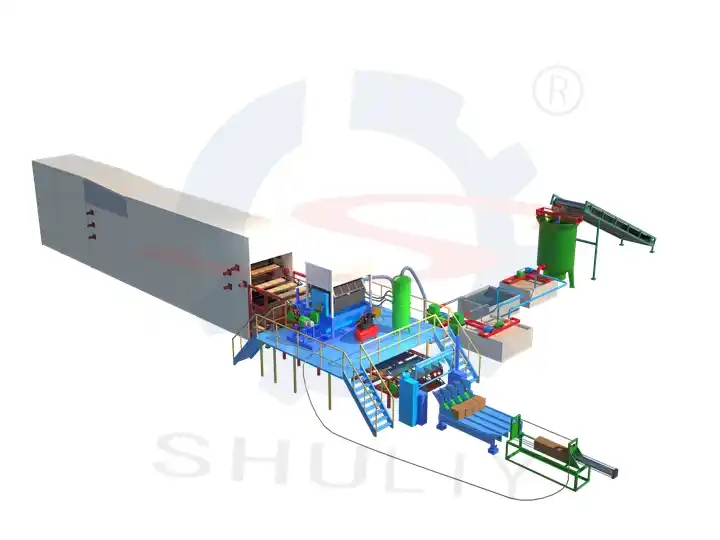Лотки из целлюлозы VS пенопластовые вставки: что лучше для упаковки вина?
In wine packaging, pulp wine trays and foam (EPS) inserts are commonly used to protect glass bottles during transport. Traditionally, foam inserts are widely used, but with stricter environmental regulations, pulp wine trays are quickly replacing foam packaging.
So, which is the best choice for wine packaging? Let’s compare them in terms of environmental friendliness, protection, cost, and storage & transportation efficiency.
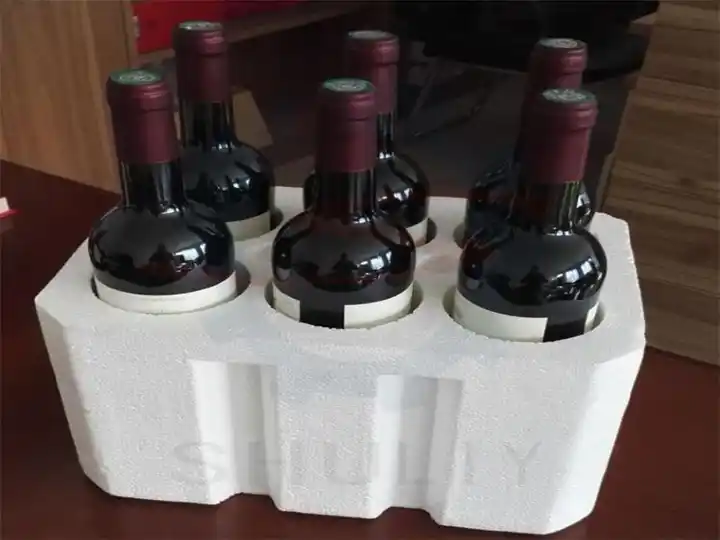
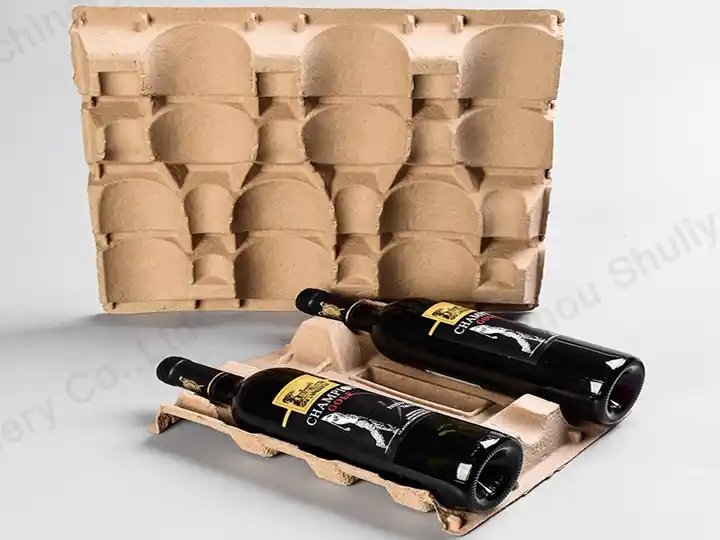
Environmental Performance Comparison
Pulp Wine Trays
- Material: 100% recycled paper pulp or plant fiber
- Biodegradable: Breaks down in about 90 days in natural conditions
- Recycling Rate: > 80%
Foam Inserts
- Material: Petrochemical product (EPS)
- Biodegradable: Over 200 years
- Recycling Rate: < 10%, with high recycling costs
Cushioning and Compression Performance
Pulp Wine Trays
- Compression Strength: 20–25 kg
- Shock Resistance: ≥ 80% (bottle intact rate in drop tests)
Foam Inserts
- Compression Strength: 15–18 kg
- Shock Resistance: ~70%
Cost Comparison (Per Wine Tray)
Pulp Wine Trays
- Material: Waste paper, about $0.02 each
- Energy: About $0.01 each
- Total Cost: ≈ $0.04 each
Foam Inserts
- Material: EPS pellets, about $0.05 each
- Energy: ≈ $0.01 each
- Total Cost: ≈ $0.06 each
Storage & Transport Efficiency
- Pulp Wine Trays: Stackable, saves about 40% storage space
- Foam Inserts: Not compressible, bulky, takes more space
Overall Benefits
- Pulp Wine Trays: Eco-friendly, lower cost, better protection
- Foam Inserts: Being phased out; some countries have banned
Pulp Wine Trays vs Foam Inserts
| Категория | Поднос для вина из целлюлозы | Foam Insert (EPS) | Advantage |
|---|---|---|---|
| Eco-friendliness | Material: Waste paper/ plant fibers Biodegradable: ≈90 days Recycling rate: >80% | Material: Petrochemical EPS Decomposition time: ≈ 200 years Recycling rate: <10% | Поднос для вина из целлюлозы |
| Compression Strength | 20–25 kg | 15–18 kg | Поднос для вина из целлюлозы |
| Shock Resistance | ≥80% (bottle intact rate in drop test) | ≈70% | Поднос для вина из целлюлозы |
| Unit Cost | ≈$0.04/pc (Raw material $0.02 + Energy $0.01 + Labor /Maintenance $0.01) | ≈$0.06/pc (Raw material $0.05 + Energy $0.01) | Поднос для вина из целлюлозы (30% lower) |
| Storage & Transport | Stackable, saves about 40% space | Non-compressible, bulky | Поднос для вина из целлюлозы |
| Compliance | Meets global plastic ban trends; well accepted in EU & US markets | Banned in many countries; export restricted | Поднос для вина из целлюлозы |
| Applications | Red wine, white wine, beer, spirits, craft beer multipacks | Mainly low-end local packaging | Поднос для вина из целлюлозы |
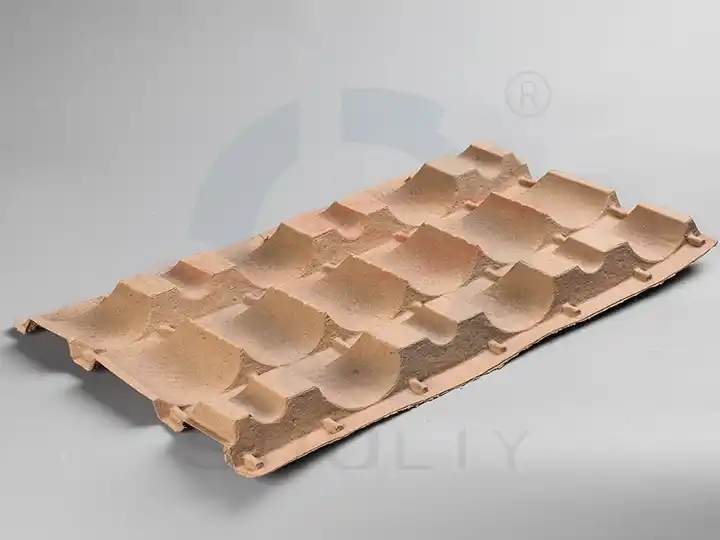
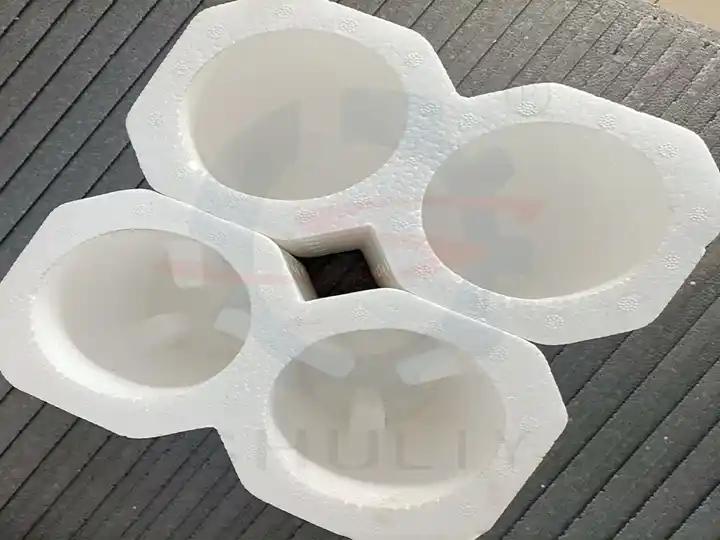
Recommended Wine Tray Production Line Models
Shuliy offers a range of machines for producing pulp wine trays and can provide customized solutions based on your requirements. If you’re interested, leave a message via the website chat popup, and we will contact you within 24 hours.
| Модель | Вместимость | Мощность | Напряжение | Вес | Использование целлюлозы | Использование воды | Размер (мм) |
| SL-1000-3X1 | 1000 шт/ч | 38кВт | 380В, 50Гц | 2500кг | 80кг/ч | 160кг/ч | 2600*2200*1900 |
| SL-1500-4X1 | 1500шт/ч | 38кВт | 380В, 50Гц | 3000кг | 120кг/ч | 240кг/ч | 2800*2200*1900 |
| SL-2500-3X4 | 2500шт/ч | 55кВт | 380В, 50Гц | 4000кг | 200кг/ч | 400кг/ч | 2900*1800*1800 |
| SL-3000-4X4 | 3000шт/ч | 60кВт | 380В, 50Гц | 4800кг | 240кг/ч | 480кг/ч | 3250*1800*1800 |
| SL-4000-4X8 | 4000шт/ч | 95 кВт | 380В, 50Гц | 7000 кг | 320кг/ч | 640 кг/ч | 3250*2300*2500 |
| SL-5000-5X8 | 5000шт/ч | 95 кВт | 380В, 50Гц | 8000 кг | 400кг/ч | 800кг/ч | 3700*2300*2500 |
| SL-7000-6X8 | 7000шт/ч | 120кВт | 380В, 50Гц | 10000кг | 480кг/ч | 960 кг/ч | 3200*2300*2500 |
